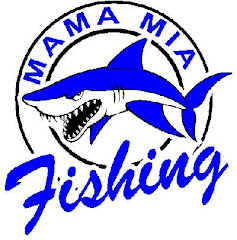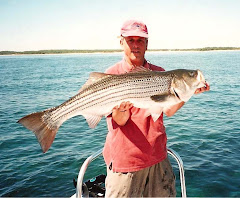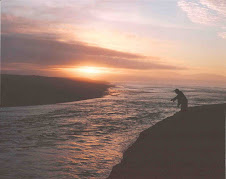One of the feistiest early season light tackle and fly game fish is the American Shad. While Long Island sees mostly visits of Hickory Shad, the Americans are well within striking distance of Long Island anglers who might like a late March or early April break from the winter hiatus. The Delaware and Connecticut Rivers both still enjoy returns of American Shad. Most of my fishing for shad has been in the lower portion of the Delaware River. That shad run is still a much-heralded fish happening in all the towns along the Delaware. The run has been celebrated for as long as this great nation of ours has been united republic. Once living close to the town of Lambertville, New Jersey I had numerous opportunities to witness the last remaining seine netting operation of shad on the river. The Fred Lewis family still nets shad as it has done since 1888 from an island bearing the family name. From those nettings, the well-known Lambertville Shad Festival is kept stocked with an inventory of fresh fish for visitors to sample, cooked in a variety of tasty ways. The seining process is quite a unique sight and even more of a tourist attraction. Seeing all those shad is enough to get any fisherman excited.
I have been fishing for shad on a fly rod and light tackle for about twenty-six years now. My indoctrination to the species came during a period when I lived along the lower reaches of the Delaware River in Hunterdon County, NJ.
Big roe American Shad can reach weights of eight or nine pounds. The buck shad are about half that size. They will be active in the Delaware River from late March in the lower portions of the river until late June in the upper reaches above the Water Gap where they spawn.. Shad prefer cooler water temperatures and will become active with water around the mid-fifty degree mark and into the low sixty-degree range. While they can still be found during summer months, the spring is by far the peak time.
Since catching those first shad I make it a point to target them in the early part of each season and I always have a wonderful time with a suitably sized fly rod or light spinning outfit. Most any small to moderately sized flies work well, and truth be told they offer much more sport than early-season stocked trout. They strike lures aggressively, and go airborne. When the choice is planted trout or fresh sea run shad the shad will always win out in my book. Shad belong to the same family of fish as herring and the same family as tarpon. While diminutive in size they have inherited many of the same sporting qualities and attributes of their very large cousins. They are a fun fish. And they will offer a ‘quantity’ experience as well.
When fly fishing for shad, the lighter the outfit the better. Any good trout rod in 6 or 7 weight is ideal; no need to go much larger than an 8 weight. Even if school-sized striped bass are in the neighborhood, the lighter rods will offer much more enjoyment. Since shad feed on a wide array of food sources from plankton to small crustacean and baitfish, a number of different flies will work quite well. Small versions of Deceivers and Clouser Minnows are ideal but I have found that tiny dart-sized flies used for Sockeye salmon work very well in all sorts of wild colors, chartreuse, orange, gold, yellow and red being some personal favorites. As far as lines go, preferences are toward high-density sink tip lines. A short, 6-foot leader is all that is required since shad are far from being line shy. Shad can also be fished effectively on light spinning gear with traditional darts, spinners and small tins.
Shad populations fluctuate so check on local state regulations before pursuing this spunky game fish.
A weekly blog dedicated to fly-fishing the waters of Long Island and other world-class destinations.
About Me
- AP
- Following a long and fulfilling corporate career I moved on to pursue other interests as a full time outdoor journalist, book author, photographer and lecturer. I am also a strategic managment consultant involved in the outdoors, recreation and lesiure time industries. Fly fishing is my favorite pastime but I enjoy all forms of fishing and traditional outdoor activities. When I am not writing you will most often find me exploring my home waters of the Long Island Sound. I am equally as comfortable on a tidal creek in the wilderness of the Alaska Peninsula, or on a Gulf Coast flat or in the waters of a free flowing river. I love to wade, fish from a boat and kayak. If I couldn't fish, my life would not be complete. And should the day ever come when I no longer enjoy catching diminutive bluegill, I will part with all my gear and take up a new sport. Professional Affiliations: Outdoor Writers Association of America; New York State Outdoor Writers Association; Professional Outdoor Media Association; Association of Great Lakes Outdoor Writers. For further information please refer to my website at www.angelopeluso.com
Welcome and Enjoy
Welcome to AP's Fly Fishing Journal, a weekly blog dedicated to the pursuit of fly-fishing. Our focus will be the waters of Long Island and other world-class destinations. Whether you are a novice, intermediate or advanced fly angler, this space will be devoted to topics of interest and value to all who pursue game fish with the long wand. Topics covered will include fly-fishing commentary, fly tying, products and any and all issues relevant to today’s avid fly angler. If you are inclined to cast flies to fish , let this "journal" be your weekly guide to a rewarding time on the water. I will cover saltwater and freshwater, the beach and boating beats as well as the increasingly popular kayak fly-fishing scene. And we will look east and west, north and south - wherever fly anglers roam. I hope you enjoy my offerings. Thank you for stopping by.










